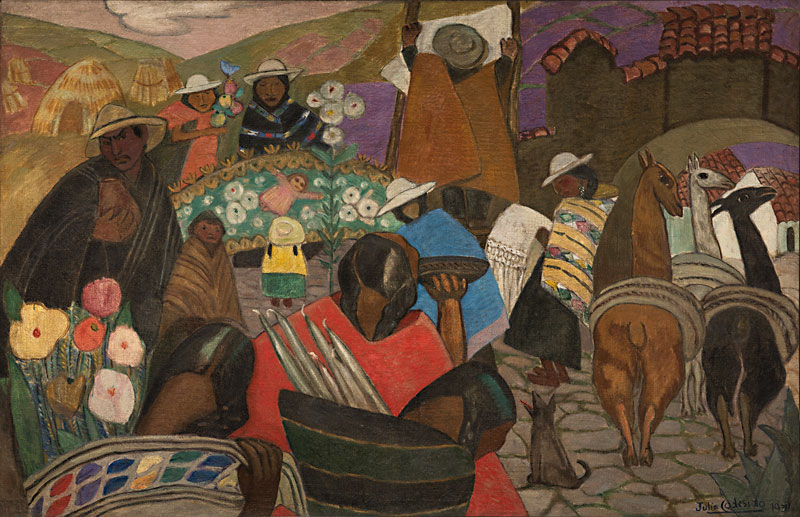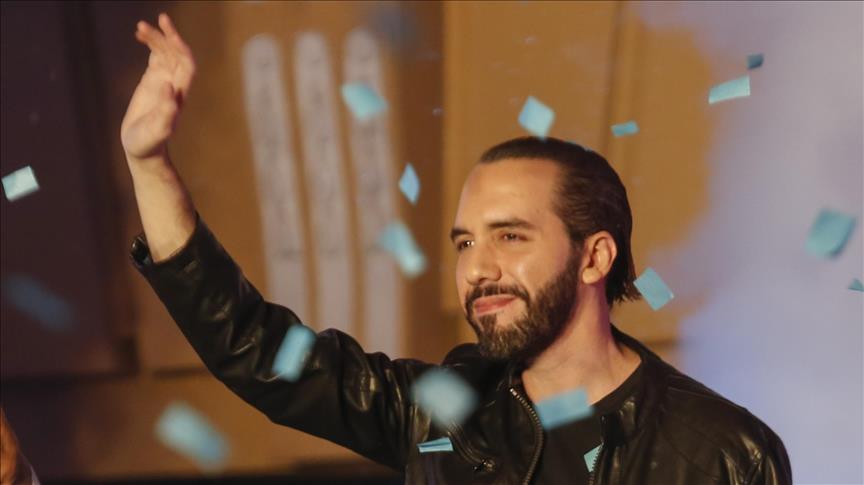The Right to Sex is the first book by Amia Srinivasan, to date the youngest incumbent of the Chichele Professorship of Social and Political Theory at All Souls, Oxford, and an essayist for publications including the London Review of Books. While her family background lies in India, Srinivasan, the daughter of a banker and a choreographer, spent an itinerant and international childhood across Bahrain, Singapore, Taiwan, London and New York before settling in her adult home, the elite Anglophone university. It is from within this institution that her book is written, and as addressing its associated population that it is most profitably read. Though her training is that of the academic analytic philosopher – a designation the publisher’s marketing has been keen to emphasise – the work is more precisely categorised as a contribution to the discipline of feminist legal theory. Situating it within this field helps us to parse the ambiguity of the book’s title. There is no right to sex, on this Srinivasan is clear, but sex itself is properly subject to a system of rights by which male sexual violence towards women might be theorized, if not redressed or prevented.
The book comprises five essays and one ‘coda’ to the central, titular chapter. The first, third and fifth chapters are diligently researched, expertly synthesized accounts of the events, theories and materials which have formed the primary interests of much of the last decade’s popular feminist writing on sexual power and consent. Chapter One, ‘The Conspiracy against Men’ chronicles recent, and some historic, instances in which a categorical ‘belief’ in women’s narratives of sexual violence can overlook and compound intersectional injustices; Chapter Three republishes Srinivasan’s lauded LRB article ‘The Right to Sex’ on the ‘incel’ (involuntary celibate) movement, the history of feminism’s anti-sex position and the fine line between preference and prejudice in online dating (it is followed by a numbered coda, ‘The Politics of Desire’); while Chapter Five surveys the literature on connections between the legal prosecution of prostitution and sexual violence, and the harmful, for-profit prison systems which purport to protect women. These essays provide a useful introduction to contemporary feminism, its permutations and positions, for those who may, somehow, have missed the debate.
Srinivasan’s great strength is to condense and arrange these arguments in ways that make their juxtaposing assumptions evident, to highlight particularly the tensions between calls for the regulation of sex, the punishment of sexual violence and the harmful social consequences of carceral legal systems. Of the book’s 279 pages, over a third is occupied with notes and indexes, suggesting a genesis in materials for the ‘Feminism and the Future’ graduate course that Srinivasan co-teaches at Oxford. According to Srinivasan, though, it is not (just) the students who need teaching. The author details her explanations, usually directed at older dons, of the harmful consequences of seemingly playful flirtations in an academic environment. The feminist’s road to Damascus, in this telling, reroutes for a pitstop at high table. Seven years ago, Rebecca Solnit described the phenomenon and consequences of men’s epistemic silencing of women in her bestselling collection Men Explain Things to Me. In 2021, Srinivasan reports that she has reversed the exegetical flow – no mean feat in the kind of prestigious institution in which, as the author often reminds us, she resides.
Chapters Two and Four provide the structural beams of the book and are the places in which Srinivasan takes up the mantle of two of feminist legal theory’s greatest arguments: the illocutionary power of pornography, and the possibility of consent in unequal social relations. It is in these chapters, also, that Srinivasan engages most fully with the book’s presiding feminist thinker, Catherine MacKinnon, whose entry in its index far exceeds that of any other writer. Srinivasan’s relationship with MacKinnon’s legacy is, like many contemporary feminists, uneasy – but we can use MacKinnon to cast light on the kind of sex, and the relationship between sex and gender, in which Srinivasan is most interested. In MacKinnon’s famous phrase, under patriarchal systems of political power, sex takes one form: ‘Man fucks woman; subject verb object.’ This sexual formula is adopted by Srinivasan without much comment or interrogation; indeed, throughout the book she follows MacKinnon’s example in her use of the verb ‘fuck’ to connote the wrong kind of sex, the sex which disempowers, and degrades, as when she describes the norms of internet porn: ‘hot blondes suck dicks, get fucked hard, get told that they like it, and end up with semen on their face.’ (At times, Srinivasan lets the mask slip and stings that are reminiscent of the literature of the height of the second wave slip through, such as her quip that a list of items banned from porn ‘associated with violence’ ought to include the male penis).
Srinivasan’s debt to MacKinnon extends beyond the lexical, however. Crucially, they agree that the act of sex and the experience of gender are inseparable concepts, a connection not just affected by but formed through unjust power relations between men and women. Where MacKinnon writes that ‘male dominance is sexual…men in particular, if not men alone, sexualize hierarchy; gender is one’, Srinivasan amends only slightly to tell us that, sex ‘is itself already gender in disguise.’ If there are violent and dangerous power imbalances between genders at a social and political level then these will necessarily manifest in relations at a sexual level also. MacKinnon’s contribution as a practising lawyer to the legal framework for sexual harassment at work in Title VII lawsuits is the basis of the logic behind recent Title IX legislation of sexual discrimination within universities, to which Srinivasan pays great attention. If MacKinnon’s aim, declared at the start of Towards a Feminist Theory of the State (1989), is to ‘engage sexual politics on the level of epistemology’ then of Srinivasan we can say that she seeks to engage sexual politics on the level of pedagogy.
Chapter Two, ‘Talking to my Students about Porn’, begins by making porn seem a problem of the past. When it came to the subject in her course, Srinivasan admits, ‘my heart wasn’t really in it.’ It was her students, she tells us, who changed her mind, who convinced her to see the positions of the anti-porn feminists not as ‘hysterical’ but ‘prescient’. This ‘return’ to the problem of porn for Srinivasan and the young people she teaches does not mean a revival of the Manichean categories of the porn wars. Srinivasan goes to great pains to point out the distinction between her concerns and those of the second-wave theorists, including Dworkin and MacKinnon. Today’s young feminist scholars know there is no point in legislating the internet, and that criminalising sex work punishes those who are dependent on it for their self-reproduction rather than challenging male entitlement to sex. Nevertheless, in Srinivasan’s account, students are disturbed by a casual and pervasive violence towards women that they see enacted both by their partners and by the sexual culture in which they came of age, ‘The psyches of my students are the products of pornography.’
Srinivasan, through conversations with her students, comes to see porn not as a stimulus for fantasy, but as an educational tool for sex. What, she worries, is it teaching the kids? Conveniently, she has on hand a readymade focus group in the form of her classroom to whom she poses the question. The responses they provide are damning:
By the time my students got around to sex IRL [‘in real life’] – later, it should be noted, than teenagers of previous generations – there was, at least for the straight boys and girls, a script in place that dictated not only the physical moves and gestures and sounds to make and demand, but also the appropriate affect, the appropriate desires, the appropriate distribution of power.
Here, the internet simultaneously stunts sexual development – delaying experiences of the ‘real thing’ because of the overwhelming availability of porn – and overstimulates it, exposing ‘her’ students to a level of sexual intensity to which they ought to graduate via a more wholesome, authentic and intimate model of sexual intercourse first. But most crucially, it defines sexual activity totally for these young people, ‘sex for my students is what porn says it is.’
Porn, then, is bad because it teaches us to want the wrong things – or so one would think based on the argument so far. Yet this clarity is short-lived. A few pages later Srinivasan writes ‘Porn is not pedagogy, but it often functions as if it were.’ What, we might wonder, is the difference between the form and the function of something which instructs and something which is pedagogical? Either porn educates or it doesn’t. Contained in this distinction is an important, privileged category of action for Srinivasan: teaching. For her, what is pedagogical is only what is ethically good; what is imbued with authority, not just power. To teach wrong desires would, to use the term of her 2019 Yale Law Journal paper, constitute a ‘pedagogical failure’ – would fail to count as teaching. For the rest of the chapter Srinivasan prevaricates on whether porn, which is imbued with social power, actually has the authority to teach young people how to have sex, despite having argued quite convincingly in earlier pages that it does.
Her conclusion is a disappointing evasion: once again the modern technological world confounds to the point of indeterminacy, and Srinivasan can only remind us that the internet ‘blurs the distinction between power and authority.’ Young people ought to be taught that ‘the authority on what sex is, and could become, lies with them.’ This, for Srinivasan would constitute a negative education, and would involve arresting the ‘onslaught’ of images to which young people are exposed, allowing them instead to use their imaginations. Sexual authority ought, in this model, to rest with the individual subject, their freedom realised by thinking and imagining outside the set of social practices within which they have been raised. As a conception of freedom, this is high liberalism, offering up in place of social power the utopia of the blank slate, the unquestionable priority of autonomy.
In her fourth chapter, ‘On Not Sleeping with Your Students’, Srinivasan presents a history of Title IX legislation from the 1980s to today, and what legal theorists Jacob Gersen and Jeannie Suk recently characterised as ‘bureaucratic sex creep’: ‘the enlargement of bureaucratic regulation of sexual conduct that is voluntary, non-harassing, nonviolent, and does not harm others’. Srinivasan draws on the case of two of her alma maters (Yale and UCL) to show the universal tightening of restrictions that fit this model, while dismissing Suk and Gersen as over-simplifying the issue to one in which consent can be freely given within a teaching relationship. The regulatory expansion Gersen and Suk map, and on which Katherine Franke has also written extensively, was greeted with reservations by some feminists at the time. As Srinivasan points out, they charged the policies with invalidating women’s consensual expression of sexual desire. This heuristic, Srinivasan suggests, is a misdirection of our anger and attention. Instead of debating whether teachers should or shouldn’t be ‘fucking’ their students, we should ask why they wouldn’t simply rather teach them.
On the question of whether there is a place for eros in the pedagogical relationship, Srinivasan concedes that ‘there are many women students who consent to sex with their professors out of genuine desire.’ Interestingly, this goes against the conclusions she reaches in her Yale Law Journal paper, from which large sections of this chapter are reproduced. There, Srinivasan outlines five possible reasons for a young woman student to sleep with her older male supervisor:
1) the student admires and wants to be like her professor, but does not (yet) want to sleep with him; 2) the student’s desire is intense but inchoate: she does not know, or there is no fact of the matter about whether she wants to be like the professor or to have him; 3) the student wants both to be like the teacher and to have him and sees having him as a means to – or a sign of – being like him; 4) the student thinks it is impossible to be like the professor and therefore longs, as a second-best, to have him; 5) the student wants merely to sleep with the professor, and the talk of poetry and understanding is just a form of flirtatious flattery.
In all but one case, sexual desire is in a sublimation of the desire to become the teacher, to attain knowledge, and also, in some cases, status. The fifth and final case, and the only one in which the student’s desire is articulated as a motivation rather than false consciousness, Srinivasan describes as ‘wildly implausible’. In trying to formulate a new position that encompasses sexual autonomy and accounts for the distorting effects of power on sex, she risks assuming that there is such a thing as sex devoid of power. But even outside the rigid hierarchies of institutional pedagogy, do we not imbue those we desire with a form of power over us? The central question for Srinivasan here is: does an imbalance of power invalidate sexual desire? Certainly, we know that it might fuel it. We must then ask whether an account of human sexuality that refuses to theorise what is ambiguous and complex in the intermingling of sexual desire and social power offers us much more than a synchronic account of the flip from good to bad.
In both book and journal paper, Srinivasan compares the misidentification of sexual desire for the teacher to Adrienne Rich’s theory of ‘compulsory heterosexuality’, in which women sublimate their desires for each other and express them instead through competitive imitation. Rich’s theory, however, is an account meant to explain the lack of conscious (lesbian) desire in the world; Srinivasan’s inversion does the opposite, and discredits (mostly straight) sexual desire – because it is the wrong type – as an errant act of transference. Where Rich aims to add to the volume of desire visible in society, Srinivasan tries to detract from it. In this framing, a student’s pedagogical identity always trumps her sexual identity, even if she doesn’t know it or want it to. The gender roles of this scenario can be reversed or contained within one gender, Srinivasan admits, as in the case of Avital Ronell or Jane Gallop, but generally the relation follows just such a male-female binary. This, then, makes consent in student-teacher relations difficult, when most of the time (four out of five hypotheticals) women students don’t know what they want. When it comes to regulating teacher-student relations, consent-based policies fail not because they patronise or infantilise the desires of women students, but because they ‘do not teach us how to teach well’. The solution? Teach the teachers to teach better: university professors ought to be trained in professional conduct regarding sexual boundaries, just like psychoanalysts. But are analysts the models we want for our pedagogues? And what can any of this tell us about sex outside the university?
In the last decade, a significant movement has taken place within feminism to reject the boardroom as the iconic site of women’s exclusion and oppression. Popular works such as Cinzia Arruzza, Tithi Bhattacharya and Nancy Fraser’s Feminism for the 99%, Lola Olufemi’s Feminism, Interrupted and Dawn Foster’s Lean Out targeted what has been referred to as ‘the collusion of gender politics with corporate capitalism’. As a result, feminist discourse has gained a new sensitivity to questions of structural power and coercion, while also being taken up by a reinvigorated activist movement. Within its Anglophone iteration, the dynamic centre of this culture is often to be found within universities; the classroom has replaced the boardroom as the terrain of feminist analysis. The risks of this manoeuvre are evident in Srinivasan’s book, which generalises outwards from the university to diagnose morbid symptoms in a culture that is not bound by the para-legal ethical frameworks of the campus.
The methodology on which Srinivasan’s insights are based is often dubious: why should the opinions of a group of Oxford students, self-selectively interested already in feminism, be taken as representative of the mores of the general young adult population? Despite rising student numbers and the efforts of a new academic cohort each autumn, the majority of human sex still does not take place in college halls. Srinivasan herself concedes the flaw in her reasoning here, when she writes that her students are developmentally much younger than their non-institutionalised counterparts. This does not render them unsuitable for sex, but it does mean that they are unlikely to be having it in the same way. For three years, the university operates a closed system of personal development, unlike anything else in society. Reading issues of desire, power and consent outwards from this solipsistic quad of mirrors will only trick the observer into mistaking their gowned reflection for the sight of the town beyond.
Read on: Susan Watkins, ‘Which Feminisms?’, NLR 109.









